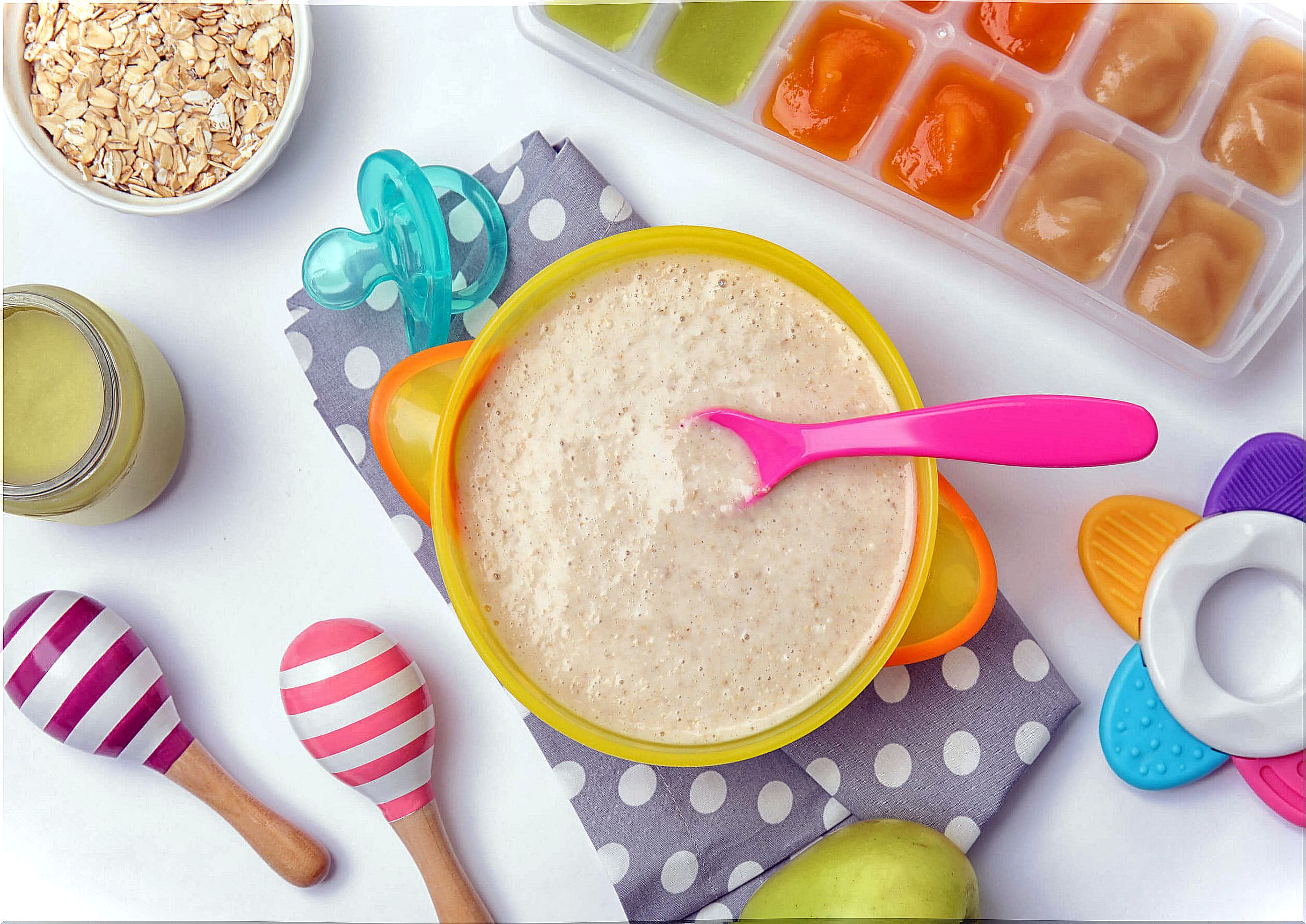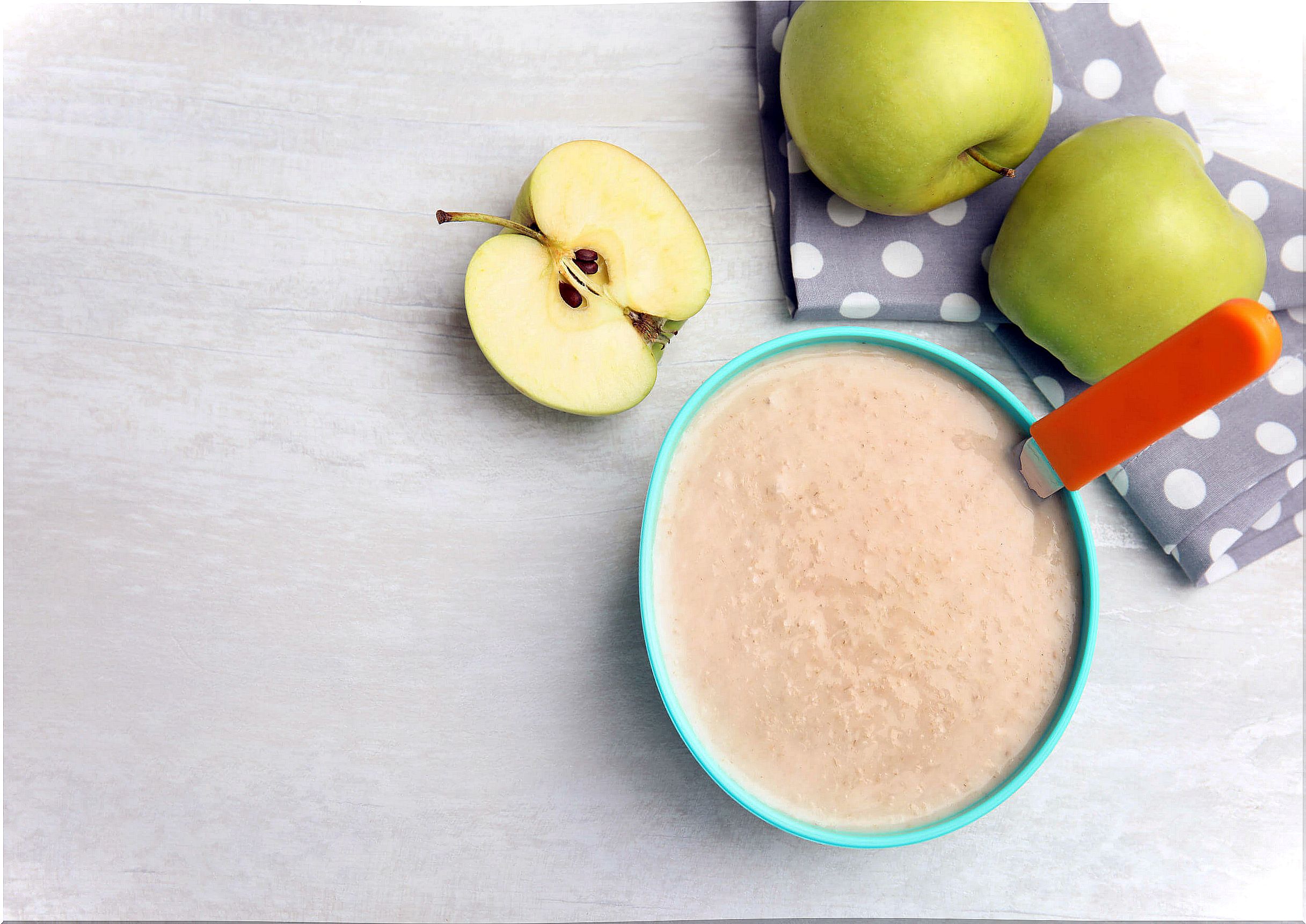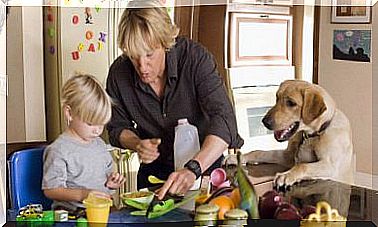How To Make Homemade Cereal Porridges

Cereal porridges are a food that can bring many benefits to children. They have a good amount of essential nutrients, although you have to prepare them properly to get the most out of them.
Keep in mind that there are several different types of cereals and not all of them have the same quality. For this reason, we are going to give you the key points to prepare cereal porridges of the highest possible quality, so that they complement the diet of the little ones.
Choose well the cereals in the porridges
The key step in properly preparing cereal porridges is to choose optimally which will be the majority ingredient used. In this sense, we recommend always using oatmeal, since it has a high quality.

The fiber contained in oats has been shown to be capable of acting at the intestinal level, favoring the growth of bacteria that inhabit the tube. Therefore, it is categorized as a prebiotic food. In fact, it is recommended at any age to avoid digestive problems.
On the other hand, it should be noted that oatmeal is one of the cereals that provides higher quality carbohydrates. Unlike wheat, it is marketed with a low level of processing, which has a positive effect on the speed of assimilation of sugars, which is slower.
However, you have to be careful with this food if you suffer from celiac disease or gluten intolerance, since it contains avenin, a protein with a disposition quite similar to gluten itself.
Fruits in cereal porridges
Cereals will be the main ingredients, but we cannot forget about the fruit. These foods have a large amount of essential micronutrients, as well as antioxidants necessary to maintain balance in the internal environment.
It is optimal to introduce apple and orange frequently in cereal porridge. Although the apple is also capable of providing fiber with a prebiotic nature, oranges contain a dose of vitamin C, which has been shown to be essential to guarantee good immune function, according to a study published in Nutrients . Thus, the incidence of viral respiratory diseases is reduced.
What dairy to include?
The time has come to talk about one of the most conflictive foods in the diet in general: dairy. These products are recommended by most of the experts in nutrition and the guides elaborated by institutional organisms.
They have a high protein content, necessary to ensure the correct development of the child. In addition, they contain essential micronutrients such as calcium or phosphorus. Some even have vitamin D.
In this sense, the use of cow’s milk is recommended for the preparation of cereal porridge, unless the child in question has an allergy to food proteins or a correctly diagnosed lactose intolerance.
On the other hand, it is always preferable to use whole varieties. In the case of eliminating the fat from the milk, the fat-soluble vitamins that are inside are also lost, so their nutritional density decreases significantly.

Avoid adding sugars
One of the common mistakes when making cereal porridge for children is to include table sugar or foods that contain it in the recipe. This ingredient is capable of negatively impacting the body, increasing the risk of developing diabetes and being overweight. That is why it is recommended to use cereals with the least degree of processing and industrialization possible.
It must be taken into account that, through the fruit, a good amount of fructose is already being provided. This should be enough to add a sweet touch in terms of flavor without having to include more simple carbohydrates.
Make cereal porridges to safeguard the baby’s health
Finally, we must emphasize that it is always a better idea to make cereal porridges at home than to buy industrial ones. The latter may contain food additives in their composition that have a negative effect on the intestinal microbiota, which can have a negative impact on health in the medium and long term.










